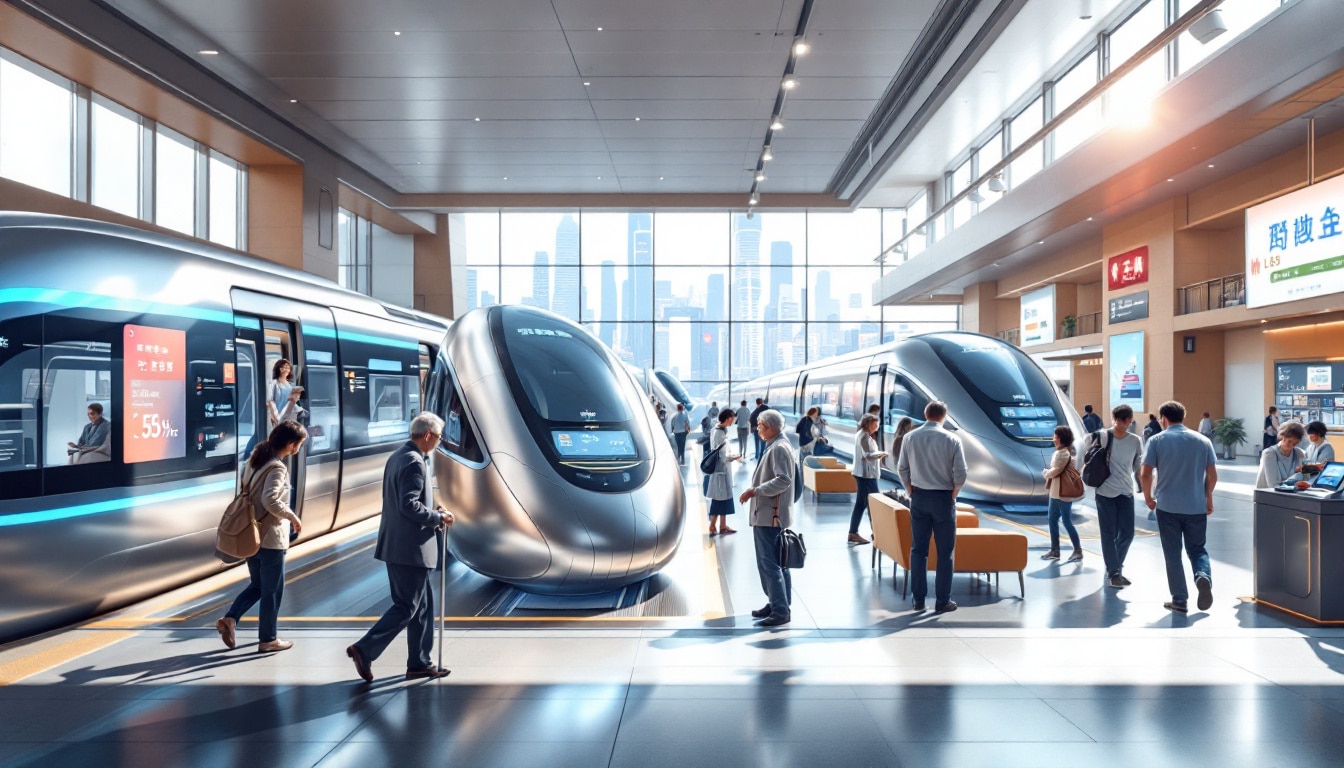China unveils a bold initiative with the launch of silver trains, designed for elderly people. This new railway network aims to meet the needs of an aging population while invigorating the local economy. Designed to provide comfort and services tailored to seniors, these trains could very well transform the travel experience for retirees, while attracting a valuable clientele. The impact of this project on tourism and commerce could mark a significant step in the evolution of services dedicated to seniors in China.
The silver trains of China and their economic impact
The introduction of silver trains in China represents a significant turning point in the realm of transport infrastructure. Specifically aimed at elderly people, these trains seek to enhance the mobility of seniors while addressing their particular needs. By promoting senior tourism, China could not only enrich the experience of these travelers but also stimulate its local economy through increased consumption.
The features of the silver trains
The silver trains are equipped with several amenities designed for the comfort of senior travelers. They thus offer accessible seating, accessible toilets, and medical facilities on board. By integrating services such as these health amenities, these trains aim to ensure a pleasant and safe travel experience. In fact, they allow seniors to travel without fear, making every trip an opportunity to explore new destinations.
A driver for senior tourism
The launch of silver trains could signify the end of an era where senior tourism was often overlooked. By creating accessible links between different regions of China, this project intensifies travel opportunities for elderly people. Consequently, this could trigger a domino effect on the local economy. Seniors, with often higher purchasing power, are likely to spend more during their travels, thereby contributing to economic growth.
Can China’s ‘silver trains’ for the elderly revitalize the economy?
The establishment of silver trains in China represents a bold initiative to meet the needs of an aging population while invigorating the economy. These trains, which will include services tailored for seniors, are designed to provide not only a comfortable means of transport but also a reassuring travel experience. By facilitating the mobility of elderly people, China hopes to encourage this segment of the population to explore its vast territory and enjoy the tourist attractions.
By expanding travel opportunities for seniors, the silver trains could indeed contribute significantly to the tourism sector. Seniors, often with free time and financial resources, represent a valuable clientele for the economy. Moreover, by diversifying tourism offerings, China could create new jobs and support local entrepreneurs who depend on the flow of tourists.
Furthermore, this initiative could also have beneficial effects on the mental and physical health of elderly people. Traveling can be a way to improve quality of life and foster social interactions, essential elements for the well-being of seniors. By investing in suitable infrastructure, China is not only meeting a societal need but also promoting a favorable economic climate by valuing the potential of older tourists.
Thus, the silver trains are at the crossroads of social service and economic dynamics. By promoting this type of transport, China could indeed pave the way for a future where seniors become key players in the economy, all while traveling with ease and security.








